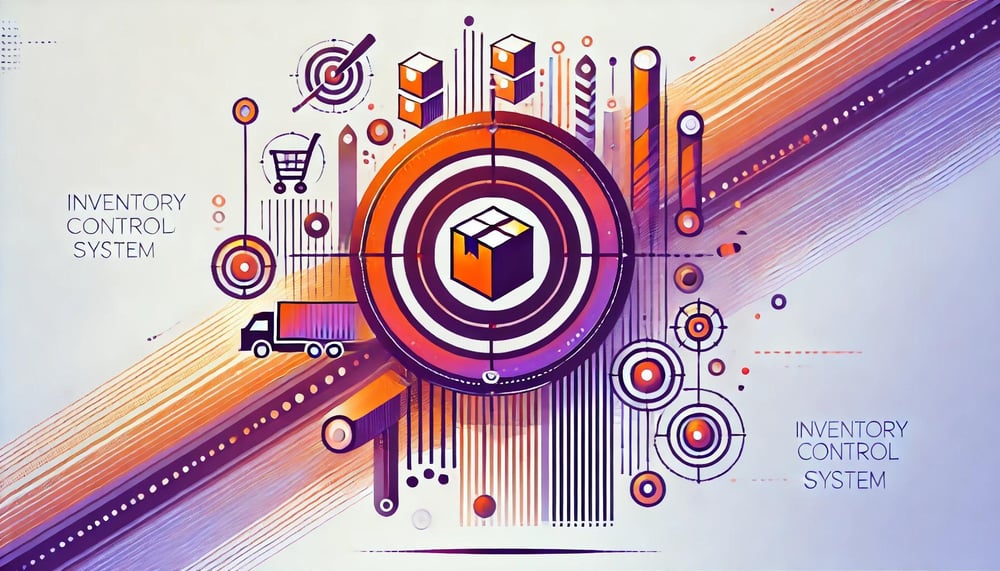Did you know that according to a report by Statista, the global retail industry loses a staggering $1.1 trillion each year due to inventory inaccuracies?
It’s a significant challenge that businesses face, and that’s where an inventory control system and its main objectives come into play. In this article, we will explore:
- The main goal of an inventory control system
- How it helps businesses overcome inventory management hurdles
- Implementation challenges
Table of Contents
Toggle3 Key Objectives of an Inventory Control System
Let’s dive and explore the full list of main objectives related to inventory control systems.
Objective 1: Maintaining Optimal Stock Levels
One of the primary objectives of an inventory control system is to maintain optimal stock levels. This involves:
- Striking a balance between having enough inventory to meet customer demand
- Avoiding excess inventory that ties up valuable resources
By accurately forecasting demand and monitoring inventory levels, businesses can ensure they have the right amount of stock on hand.
For example, a clothing retailer needs to carefully manage its inventory to meet the ever-changing fashion trends. By analyzing past sales data and market trends, the inventory control system can determine which items are in high demand and adjust stock levels accordingly.
This not only prevents stockouts but also avoids the accumulation of unsold inventory, reducing the risk of financial loss.
Objective 2: Enhancing Business Efficiency
An efficient inventory control system streamlines the entire inventory management process, leading to enhanced business efficiency.
By automating repetitive tasks, businesses can:
- Save time
- Reduce errors
- Allocate resources more effectively
This allows employees to focus on more strategic activities, such as improving customer service or exploring new growth opportunities.
Consider a manufacturing company that relies on a complex supply chain to produce its products. With an advanced inventory control system in place, the company can automate the tracking of raw materials, production progress, and finished goods.
Objective 3: Minimizing Inventory Costs
Inventory costs can significantly impact a company’s bottom line. Excess inventory:
- Ties up working capital
- Increases storage costs
- Can lead to obsolescence
On the other hand, insufficient inventory can result in lost sales and dissatisfied customers.
An inventory control system aims to strike a balance between these two extremes, minimizing costs related to carrying inventory while ensuring adequate stock levels to meet demand.
Components of an Inventory Control System
An inventory control system consists of various components that work together to achieve its objectives. Let’s take a closer look at these components.
1. Inventory Management Software
Inventory management software is a crucial component of an inventory control system. It automates inventory tracking, provides real-time visibility into stock levels, and facilitates demand forecasting. With advanced features such as barcode scanning and integration with other business systems, inventory management software streamlines the entire inventory management process.
Moreover, modern inventory management software often includes features like automated reordering, supplier management, and performance analytics. These functionalities help businesses optimize their inventory levels, reduce carrying costs, and improve overall operational efficiency. By leveraging the power of data analytics and machine learning, some advanced inventory management software can even predict demand patterns and suggest optimal stocking levels.
2. Physical Inventory Tracking
In addition to software solutions, physical inventory tracking is also an integral part of an inventory control system. This involves conducting periodic stock counts to ensure that the actual inventory matches what is recorded in the system. By reconciling any discrepancies, businesses can maintain accurate inventory records and minimize errors.
Furthermore, physical inventory tracking extends beyond the warehouse to include in-transit inventory, consignment stock, and goods on display in retail stores. By implementing robust tracking mechanisms such as RFID tags, GPS tracking, and IoT sensors, businesses can monitor their inventory in real-time and prevent stockouts or overstock situations. This level of visibility and control is essential for meeting customer demand and optimizing inventory turnover rates.
3. Demand Forecasting
Demand forecasting involves analyzing historical sales data, market trends, and other relevant factors to predict future demand. By leveraging demand forecasting techniques, businesses can make informed decisions about inventory replenishment, production planning, and overall supply chain management.
Moreover, demand forecasting is not just limited to predicting customer demand but also extends to anticipating seasonal fluctuations, economic trends, and external factors that may impact inventory requirements.
By incorporating predictive analytics, machine learning algorithms, and collaborative forecasting tools, businesses can enhance the accuracy of their demand forecasts and align their inventory levels with market demand. This proactive approach to demand forecasting enables businesses to minimize stockouts, reduce excess inventory, and improve customer satisfaction levels.

Challenges in Implementing an Inventory Control System
Implementing an inventory control system comes with its fair share of challenges. Let’s discuss a few common hurdles businesses may encounter and how to overcome them.
Overcoming Data Accuracy Issues
Data accuracy is crucial for an inventory control system to work effectively. Inaccurate inventory data can lead to stockouts or excess inventory, impacting customer satisfaction and profitability. To overcome data accuracy issues, businesses should invest in regular data audits, implement barcode scanning technologies, and train employees on accurate data entry and management.
Regular data audits involve thoroughly reviewing and verifying inventory records against physical stock. This process helps identify any discrepancies and ensures that the inventory data is up-to-date and reliable.
Barcode scanning technologies can greatly improve data accuracy by eliminating manual data entry errors. By scanning barcodes, businesses can quickly and accurately update inventory levels, reducing the chances of data inaccuracies.
Training employees on accurate data entry and management is also essential. Providing comprehensive training programs that cover proper data entry techniques, inventory tracking procedures, and the importance of data accuracy can significantly reduce errors and improve overall data quality.
Dealing with Stock Variances
Stock variances occur when the recorded inventory levels do not match the physical inventory count. This can be due to:
- Theft
- Damage
- Other operational issues
To address stock variances, businesses should conduct regular physical inventory counts, investigate any discrepancies, and implement stringent security measures to prevent theft or damage.
Regular physical inventory counts involve physically counting and verifying the actual stock on hand. This process helps identify any discrepancies between the recorded inventory levels and the physical count. By investigating these discrepancies, businesses can uncover the root causes of stock variances and take appropriate actions to rectify the situation.
Managing Supplier Relationships
Achieving optimal inventory control also depends on building strong relationships with suppliers. Timely and accurate deliveries are essential to maintaining stock levels and meeting customer demand. Businesses should establish clear communication channels, negotiate favorable terms, and collaborate closely with suppliers to ensure a steady supply of goods.
Establishing clear communication channels with suppliers is crucial for effective inventory management. This includes regular communication regarding stock levels, lead times, and any changes in demand. By maintaining open lines of communication, businesses can proactively address any potential supply chain issues and ensure timely deliveries.
Negotiating favorable terms with suppliers can also help optimize inventory control. This can include securing discounts for bulk orders, implementing vendor-managed inventory systems, or establishing consignment arrangements. By working closely with suppliers and negotiating mutually beneficial terms, businesses can reduce lead times, minimize stockouts, and improve overall inventory management.
Take the Leap Forward with Inventory Control System Implementation
Implementing an inventory control system is a step in the right direction for businesses looking to streamline their inventory operations and improve overall business performance.
However, it is important to be aware of the challenges that may arise during the implementation process. By addressing data accuracy issues, dealing with stock variances, and managing supplier relationships effectively, businesses can overcome these challenges and optimize their inventory management processes.






